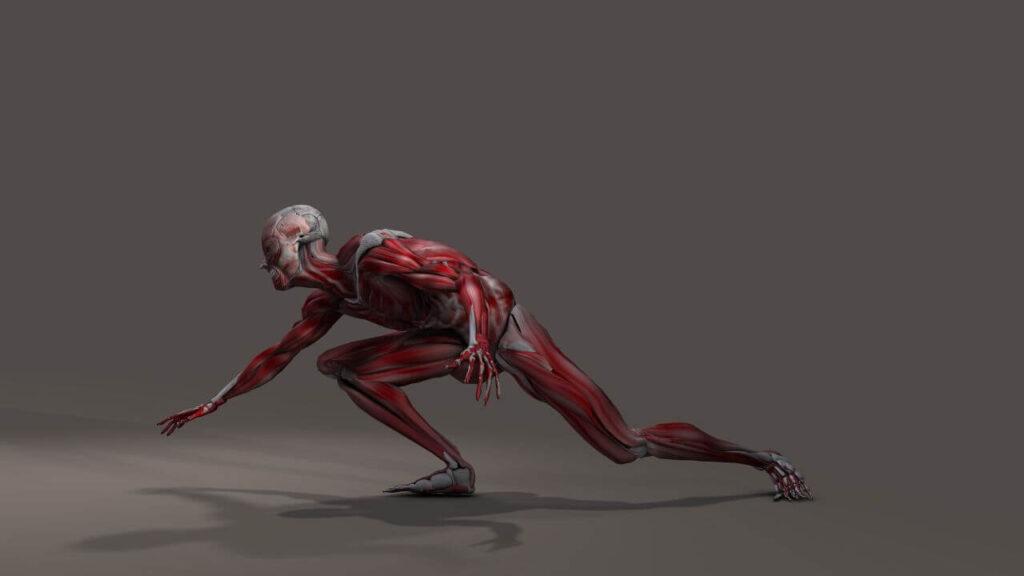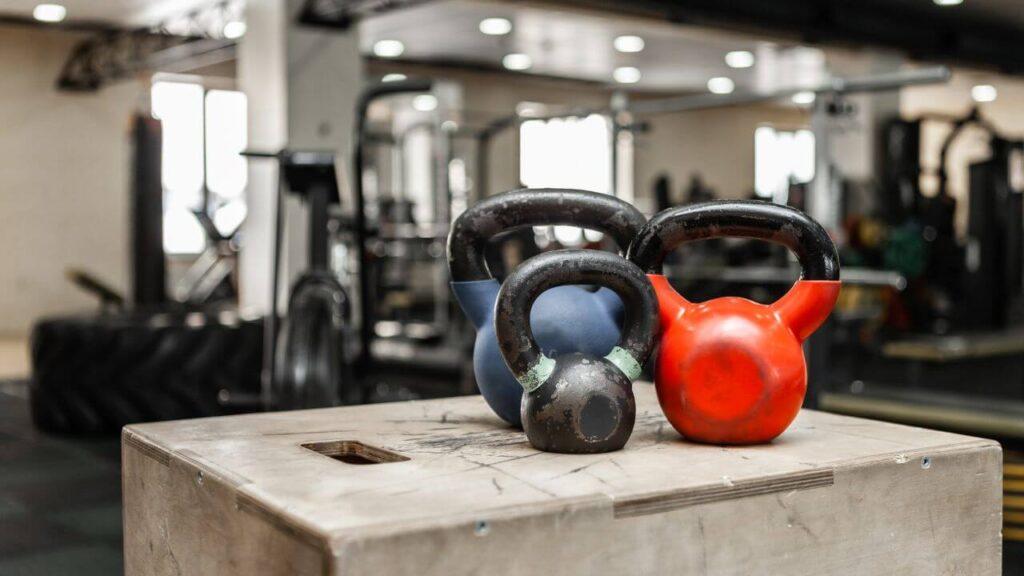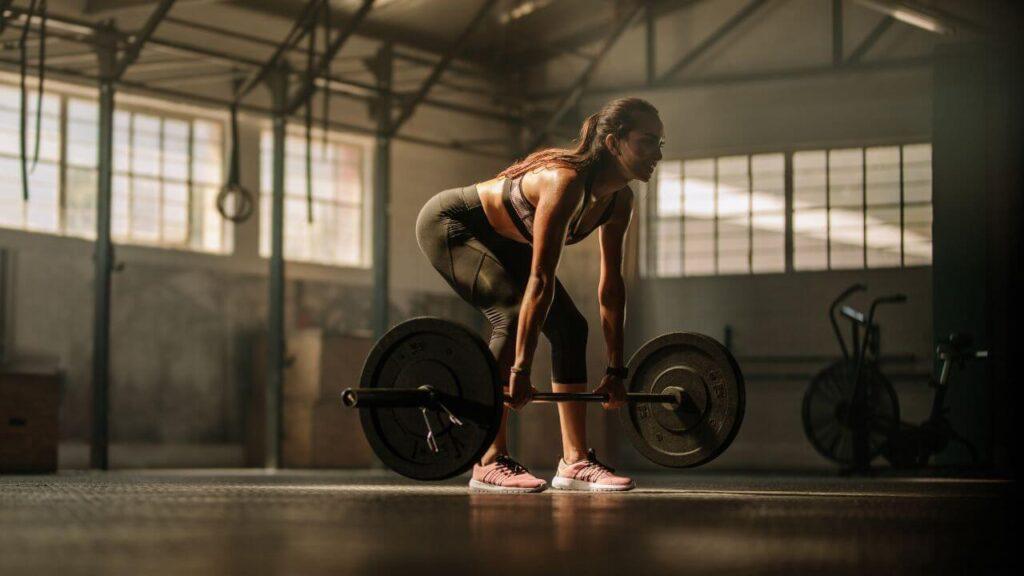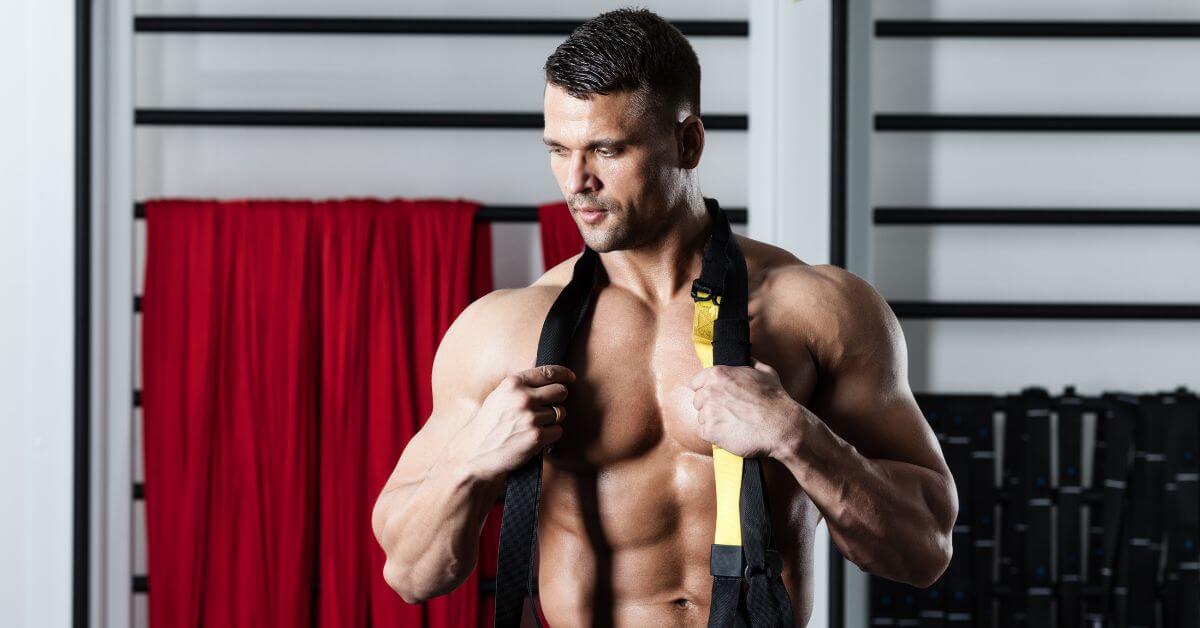Functional training has become a buzzword these days in the fitness industry, and it is confused with many things that it simply is not.
Table of Contents
ToggleAlso, there are many misconceptions regarding the following:
- Who should do functional training?
- How can I make my workouts more functional?
- Why should you even train functionally in the first place?
During my basketball years in Hungary, I was first introduced to the concept of functional training by one of the coaches who studied at the same university I am at today.
I immediately fell in love with programming exercises based on functional movement patterns.
It seemed logical to program exercises based on primal movement patterns, and I truly believed that was the best way to avoid muscle imbalances and holistically build strength.
This intro is already too long, so I suggest jumping right into the core propositions of functional training.
Let’s begin!
Start Building Your Dream Body Today
Ready to elevate your fitness game without falling into the trap of dull, repetitive routines that just don’t deliver? Imagine sculpting your ideal physique and boosting your health, all while still enjoying life’s pleasures, like those irresistible weekend getaways and your aunt’s legendary cheesecake. With our online fitness and nutrition coaching service, you don’t have to compromise. Dive into a personalized fitness journey that blends perfectly with your lifestyle, not against it. Book your completely free discovery consultation today, and take the first step towards a transformation that doesn’t require giving up the joys of life.

“I was skeptical about online fitness coaching, but Functional Body Savage completely changed my perspective. Vanja and Radomir’s personalized approach and attention to detail have helped me achieve goals I never thought possible. I’m stronger, more confident, and grateful for their guidance.”
Emily Thompson, San Francisco, CA
Learn More About Our Online Coaching ServiceQuick Summary
- Functional training is the exercise program that helps you build the necessary motor skills for your daily life or professional field of action.
- Functional training is based on movement patterns, including push, pull, squat, lunge, hinge, rotation, and gait.
- Every functional training program is highly-individualized and should correspond with the client’s personal needs and goals.
What Is Functional Training?
Functional training is the type of exercise program that aims to develop functionality and strength across multiple movement patterns and planes of motion and has the biggest carryover to everyday life.
“Function is, essentially, purpose. When we use the word function we are saying that something has a purpose. So when we apply that term to training for sport we are talking about purposeful training.” – Michael Boyle, Strength and Conditioning and Strength Training Consultant
Now, in my opinion, I would separate functional training into two subcategories.
We might as well add that these are two types of functional training:
- Functional training for the general population
- Sport-specific functional training
The first category focuses on developing muscles and joints used in everyday life and supporting daily activities such as walking, running, carrying groceries, or fighting evil thieves trying to steal the purse from the old lady next door.
Yes, it is an exaggeration, but you get the point.
The second subcategory of functional training focuses on developing necessary motor skills to support athletes’ sport-specific needs during their careers.
The main focus of this type of functional training is to develop strength, mobility, or other motor skills needed for the athlete to perform better in their field of action [1].
However, both of these subcategories have something in common.
They share the same basis: functional or fundamental human movements.
Let’s cover those first.
You might want to read:
- Is Body Pump Functional Training?
- Is Calisthenics Functional Training?
- Is Crossfit Functional Training?
- Is Trx Functional Strength Training?
- Is HIIT Functional Training?
- Is Yoga Functional Training?
Functional Movements: The Fundamental Human Movements

Functional fitness training is based on certain principles.
One of those principles lies in using functional movements to develop a holistically strong body resilient to injuries and ready to perform.
Before going any further, I need to clarify some terms regarding movement patterns.
Functional movements, fundamental human movements, primal movement patterns, functional training movements, and functional movement patterns are all the same.
People call them different names, and it seems the industry can’t decide how many patterns there are.
For me, I consider the following movement patterns under the category of fundamental movements:
- Pull – or pull something towards your body.
- Push – or push something away from your body.
- Squat – bending more in your knees than in hips, but includes both.
- Lunge – the act of lunging forward with one leg while keeping the other leg on the floor and repeating with the other leg.
- Hinge – the act of bending your torso forward.
- Rotation – rotating your body on both sides.
- Gait – regular walking motion.
Now, you may ask why I include squats and not the “knee-bend” instead.
You may think the opposite and ask why I didn’t put a deadlift instead of the hip hinge motion.
The main reason is that we always use these terms interchangeably, and more often than not, they mean the same thing.
I am not saying knee-bending is the same as squatting and hip-hinge is the same as deadlifting.
Those are always true at the extreme.
When you perform squats, you must bend your hips, and when you deadlift, you must slightly bend your knees, all while keeping your core tight.
So, I purposely tried to mislead you there, but here is a piece of advice when programming: use the pairs of knee-bend/hip-hinge and squats/deadlifts.
This will equalize both sides and make the programming a lot easier.
Here is a full guide on this subject below:
Functional Training Exercises
Functional fitness exercises are components that create a well-balanced and effective functional fitness workout.
Functional exercises are often chosen and based on everyday movement patterns that we talked about previously.
Essentially, functional exercises are meant to evoke positive adaptations on your body to have the biggest carryover to the goal you want to achieve.
These exercises, in the general sense, almost always emphasize full range of motion at joints, using free weights, and somewhat being in an athletic stance or at least that your feet are in contact with the ground and are making effort to stabilize the body.
If these three conditions are met, I would consider it a functional exercise.
There is a big misconception that a functional exercise needs to be compound in nature.
This basically means that all functional exercises should use large muscle groups and multiple joints to complete the movement.
However, this falls under the wagon when we start talking about sport-specific training.
List of related articles on the topic of functional training exercises:
- 15 Functional Shoulder Exercises for Strength & Mobility
- 10 Functional Core Exercises for Stability and Strength
- 14 Best Functional Bodyweight Exercises
- 10 Best Functional Upper Body Exercises for Strength
- 14 Best Functional Leg Exercises for Strength and Mobility
- 10 Functional Arm Exercises for Size & Performance
- 7 Best Functional Chest Exercises and Workouts
- 20 Basic Functional Training Exercises
- 9 Advanced Functional Training Exercises
- 11 Full Body Functional Training Exercises
- 7 Functional Training Exercises at Home
- 8 Functional Training Exercises for Weight Loss
Compound Exercises
Compound exercises are multi-joint movements that activate large muscle groups.
They represent pillars of every serious and well-programmed strength training.
At the core of every functional fitness workout lie compound exercises representing foundational strength exercises responsible for the most significant strength and hypertrophy gains [2].
In the process of creating a functional exercise program, it is essential to put compound exercises at the beginning and single-joint/isolation exercises towards the end of the workout.
This is because compound movements are much more taxing for the central nervous system, and you will need more rest, energy, and concentration to complete them efficiently and without getting injured.
Consider reading:
- Compound Exercises: The Ultimate Guide to Building Strength and Muscle
- Compound vs. Isolation Exercises
Free Weight Exercises
Free weights are the most important equipment for functional fitness workouts [3].
Fitness professionals often neglect use of free weights, and many prefer using machines instead.
This is wrong on so many levels, and the first is building what you might call “dysfunctional” or unusable strength.
Also, machines are just terrible for exercising your stabilizer muscles, meaning your stabilization doesn’t improve and your proprioceptors work less than they should.
Needless to say, you shouldn’t completely neglect the use of machines.
However, it is essential to incorporate free weight exercises to:
- Support full range of motion at joints
- Develop functional strength
- Activate stabilizer muscles
These three things are especially important for older people and athletes, which may sound counterintuitive because those two groups seem too distant from each other.
However, older people will benefit from stronger joints and more stability, while athletes will decrease the chance of injury and develop usable strength that can be translated to their field of action.
Balance Exercises
Balance exercises, such as standing on the Bosu balls, can greatly increase your stability.
I know certain coaches have many confronting things to say about balance boards and balance training, but that isn’t the excuse to avoid mentioning its benefits.
For instance, people often mistake the fancy use of functional equipment for well-programmed balance training.
You can drastically improve your balance by simply doing unilateral exercises such as single-leg deadlifts, unilateral lat pulldowns, and rear-foot elevated split squats.
If you are allergic to complex and strangely looking balance board exercises, you might stick with the previous examples to still build a significant amount of balance.
Now, I must also mention that it is impossible to develop better balance since balance is a motor skill that we are already born with.
However, we can improve the output or how well we can balance our bodies in the free space around us.
Those two things are different because the first is the innate ability to be stable, and the second is developed through intensive training and involves inter and intramuscular coordination.
Weight Bearing Exercises
Weight-bearing exercises are all exercises that force our bodies to work against gravity.
That is a strange definition since most exercises force our bodies to work against gravity.
Here are some examples so you can get a clear insight into these types of exercises:
- Walking
- Hiking
- Jogging
- Climbing stairs
- Playing tennis
- Dancing
As you might see, these general activities are excellent for maintaining your cardiorespiratory health and fitness.
Mobility Exercises
Mobility exercises are one of the most important functional fitness exercises that improve the range of motion at our joints.
When you improve the range of motion at your joints, you drastically reduce the chance of injury.
Also, you can easily improve your current performance if you are an athlete or complete daily tasks much easier if you are a regular or older person.
Either way, mobility and flexibility are important for keeping your joints healthy, decreasing the risk of injury, and improving your overall performance.
Now that we covered everything from the definition, movement patterns, and functional exercises, it is time to jump right into the equipment we prefer to use to build functional strength.
Let’s get right into it.
Functional Training Equipment

Functional training equipment are all types of fitness equipment used to support functional exercises with means of developing strength, stability, mobility, or any other motor skill.
Here is the list of functional training equipment:
- Kettlebells
- Dumbbells
- Barbells
- Cable machines
- Medicine balls
- Resistance bands
- Suspension system
- Ropes
- Sandbags
- Balance disks
- Weighted vest
- Sleds
- Clubbells
- Macebells
- Pull-up bar
- Plyo box
- Jump rope
- Physioballs
- Slideboard
- Redcord
- Rocker and wobble boards
- Whole Body Vibration equipment
- Bodyweight training
- Functional trainer
I know you are asking yourself now why he didn’t simply say everything except machines.
And you would be right.
However, this way it is easier to visualize all potential equipment you can use to train functionally.
You may want to read:
Example Functional Training Workout
Based on the previous topics we discussed, including movement patterns and types of exercises, we will create a small but effective functional training workout.
Remember that this is just a single workout, not the entire program for a week or a month.
We will structure our functional workout by picking one exercise for each movement pattern and ensuring it is” functional” enough to be on our list.
This means we will choose exercises mostly performed with free weights or our body weight.
Here is an example of a full-body functional training workout:
- Dumbbell bench press
- Bodyweight pull-ups
- Barbell back squats
- Front plank
- Side plank
- Overhead press
- Barbell rows
- Ab crunches
- Russian twists
Here is the 2-day split routine in case you don’t prefer full-body workouts:
Day 1:
- Dumbbell bench press
- Ab crunches
- Rear-foot elevated split squat
- Pull-ups
- Side planks
Day 2:
- Dumbbell overhead press
- Front plank
- Single-leg deadlift
- Barbell rows
- Russian twists
Now, we might discuss the programming, sets, reps, rest intervals, and the rest of the factors only if we have a goal in our mind that we want to achieve with the workout.
However, this is the most basic way to set up a functional workout based on movement patterns.
You might want to read:
Functional Training Benefits
There are numerous benefits to incorporating the principles of functional training. One of my favorites is building a well-balanced body lacking muscle imbalances [4].
How we structure our exercises based on movement patterns ensures we develop agonistic and antagonistic muscles simultaneously and holistically.
In my opinion, this is the most effective way to avoid injuries caused by muscle imbalances and build real and useful strength.
Sometimes in sport-specific scenarios, we won’t be allowed to balance these movement patterns because that goes against the result of our athletes.
However, the minimal use of this principle is still enough to avoid headaches caused by muscle imbalances. I would still encourage coaches to implement movement patterns-based exercise selection due to decreased risk of injury.
“For the strength and conditioning professional, the number one goal of a strength and conditioning program should be injury prevention.” – Michael Boyle, Strength and Conditioning and Strength Training Consultant
The next benefit is building strength in the full range of motion.
It isn’t just important to build strength but to use the most significant amount of our joint’s range of motion to produce that force.
This also helps reduce the chance of injury and helps develop a more stable and balanced locomotor system.
I would encourage you to get the full list of benefits in the related articles section below.
Related Articles:
Traditional vs Functional Strength Training
Both functional and traditional strength training have something in common.
Both are focused on developing strength but they use different means, and the outcomes are often different too.

Consider reading:
- Functional Strength Training vs Traditional Strength Training
- Is Functional Strength Training Weights?
- Is Functional Training Better Than Weights?
What Is the Difference Between Functional and Strength Training?
The main difference between functional and strength training is the equipment and exercise selection.
Traditional strength training focuses on building strength through free weights and machines and doesn’t care how that strength is built in the end.
Contrary to that, many functional training experts believe that the strength you build through using machines is simply dysfunctional and doesn’t translate well in your field of performance.
I would agree and disagree with both statements.
Also, avoiding using machines to build strength is unnecessary, but the right time and place in the workout should accompany such a choice.
“Simply learning to produce force while under a heavy load and on two feet is nonfunctional for most athletes.” – Michael Boyle, Strength and Conditioning and Strength Training Consultant
What Is Functional Bodybuilding?
Functional bodybuilding is a system of controlled movements based on bodybuilding and functional training principles.
Bodybuilding exercises are used specifically and with functional patterns in mind to create a superior workout for the regular population and athletes.
The first time I heard the term functional bodybuilding, I was kind of struck because those two seem like an oxymoron.
I couldn’t picture how you could make bodybuilding functional before I came across OPEX Fitness and its training methodologies.
After thorough research, I can say that functional bodybuilding is a real thing and can benefit your regular life and as a professional athlete.
Designing a Functional Training Program
Designing a functional training program is hard and takes a substantial amount of time.
When designing a functional fitness program, you must consider the following:
- Training goal
- Available time
- Number of mesocycles
- Training methods
- Sessions per week
- Exercise selection
- Sets, reps, rest intervals
Those were just a couple of things you need to consider, but you have much more.
I strongly advise you to read an in-depth article on functional training programming below, under the related articles section.
It will guide you through the process and help you create your first functional training program.
Related Articles:
Why Should You Start Training More Functionally?
You should start training more functionally for many reasons, and the most important is to build a long-lasting, healthy, injury-free, resilient, and strong body.
We need to switch the focus from planning our workouts based on muscle groups and start thinking more about the function.
What do we need daily to help us go through the whole day without physical difficulties and boost our quality of life?
It may sound idealistic, but every functional workout will be different because it is highly individualized.
In that sense, everything can be somewhat considered a functional program.
That’s why we have two main categories, one for regulars and the other for athlete professionals.
However, if we eliminate the second subcategory, the program stays pretty much the same.
If you are struggling to create your first functional training program, please visit the contact page and email me; I would be more than happy to help you.
Start Building Your Dream Body Today
Ready to elevate your fitness game without falling into the trap of dull, repetitive routines that just don’t deliver? Imagine sculpting your ideal physique and boosting your health, all while still enjoying life’s pleasures, like those irresistible weekend getaways and your aunt’s legendary cheesecake. With our online fitness and nutrition coaching service, you don’t have to compromise. Dive into a personalized fitness journey that blends perfectly with your lifestyle, not against it. Book your completely free discovery consultation today, and take the first step towards a transformation that doesn’t require giving up the joys of life.

“I was skeptical about online fitness coaching, but Functional Body Savage completely changed my perspective. Vanja and Radomir’s personalized approach and attention to detail have helped me achieve goals I never thought possible. I’m stronger, more confident, and grateful for their guidance.”
Emily Thompson, San Francisco, CA
Learn More About Our Online Coaching ServiceReferences:
- https://www.frontiersin.org/articles/10.3389/fphys.2021.738878/full
- https://www.ncbi.nlm.nih.gov/pmc/articles/PMC5744434/
- https://pubmed.ncbi.nlm.nih.gov/32358310/
- https://www.sciencedirect.com/science/article/pii/S1728869X10600172






